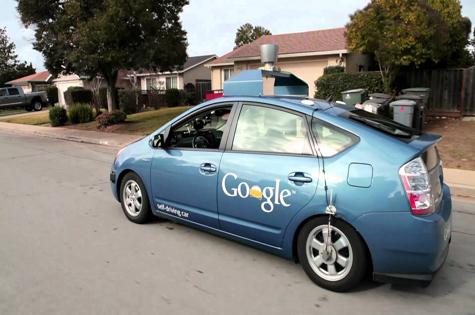In 2014, more than three people died on Australia’s road every single day – a total of 1,158 fatalities. The official data also shows that more than 53,000 people suffered injuries in road accidents, either in a vehicle, as a pedestrian or as a cyclist.
These grim facts are the biggest motivation for the ongoing development of intelligent systems to make cars safer, according to researchers Dr Peter Gardner and Dr Edward Hoare of the University of Birmingham in England.
“All major automotive manufacturers and their suppliers, in addition to Google, hi-tech firms and telecoms companies, are making strides towards the vision of autonomous – or self-driving – cars,” explains Dr Gardner.
He says that significant amounts of funding have been invested by national governments, the European Union and the defence sector in the past two decades, with no sign of their commitment waning.
Dr Garner and Dr Hoare say that the quest towards the “holy grail” of a mass-produced, fully autonomous car is the fourth in a series of revolutions in automotive safety.
“The first, spanning the 1950s to the 1970s, saw the introduction of the modern seat belt and airbags, with the aim of reducing the impact of accidents on passengers.
“The second revolution, up to the 1990s, involved developments in active safety systems, such as anti-lock brakes, that tried to avoid, or at least minimise, the severity of accidents for all road users. The third revolution occurred in the late 1990s and saw active safety systems intervene in the driving process, expanding the sensing range beyond the car’s bumpers,” Dr Gardner said.
“By the start of the current decade, the option in ordinary family cars for radar sensors to control the brakes and accelerator as part of adaptive cruise control systems had become commonplace. We are now entering the fourth revolution, where advanced sensors, communications and computational intelligence are all combining to reduce the societal cost of road transport by anticipating and avoiding accidents, minimising the environmental footprint of road transport and further reducing road casualties.”
Dr Hoare adds that the future of car technology will be shaped not only by what drivers want, but what they need.
“Recent surveys indicate that most drivers would like to retain some form of control over their car and would accept fully autonomous driving only under very specific conditions, such as long motorway journeys. On the other hand, drivers would welcome technologies that reduce their workload and intervene proactively when fatigue or lapses of concentration happen.”
The eyes, ears and ‘feel’ of any such future systems would come from its sensors. “Sensors are both inward-looking, at the driver and the vehicle itself, and outward-looking, at the environment.
“The tougher sensors to invent are the outward-looking ones. They have to be able to tell if you are driving close to a pedestrian, a cyclist or another car, as well as whether you are driving on-road or off-road. They even possess situational awareness - the car needs to figure out whether swerving to avoid an unexpected obstacle will lead to an uncontrolled skid, or whether it can avoid the accident altogether.
“The cameras involved are high-resolution and are able to provide 3D images, but they do not work when it is foggy or in dense spray, which is needed in many parts of the world. They may also get blinded by the sun or even headlamps,” Dr Hoare said.
He says that acoustic sensors are great for parking and for other very short-range applications, but once again they cannot be trusted in noisy environments, at high speed, or operating over distances above 100 metres.
Dr Gardner and Dr Hoare said that research funded by the automotive industry and the UK Government is making significant strides towards creating sensors that work in all weather conditions and do not have these drawbacks.
And what this means for the ordinary driving consumer is that this research is moving us closer towards the vision of autonomous cars.



















__small.png)










